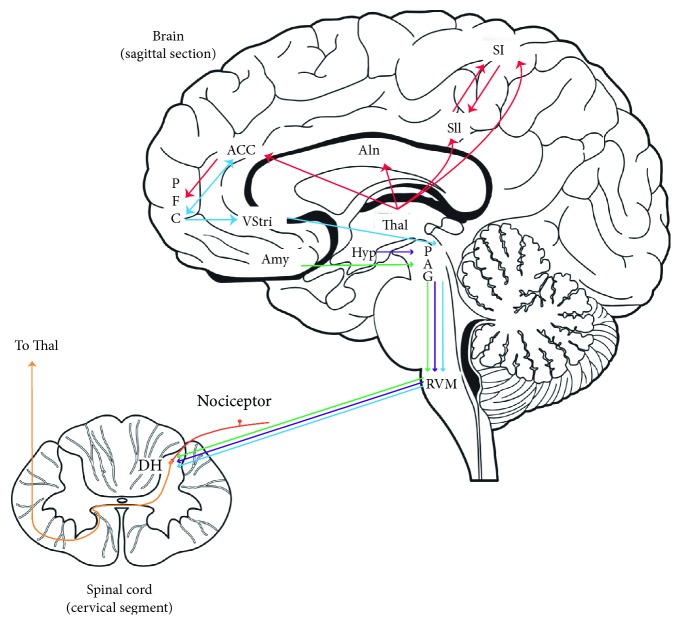Figure 1.
An overview of the major components and connections of the pain modulatory system. Nociceptive inputs ascending from dorsalhorn (DH) of the spinal cord to the ventroposterolateral or ventroposteromedial nuclei of thalamus, from where it flows in different pathways: (1) lateral thalamus to SI and SII—processing the sensory-discriminative aspect of pain; (2) medial thalamus to AIn, ACC, and PFC (viaACC)—processing the affective-motivational component of pain. The descending pain modulatory regulation involves the components of the reticular formation (PAG and RVM) which can modulate nociceptive signals at the DH of the spinal cord. This process is highly regulated by the opioidergic and serotonergic systems. RVM: rostroventromedial medulla; PAG: periaqueductal gray; Thal: thalamus; HT: hypothalamus; Amy: amygdala; VStri: ventral striatum; AIn: anterior insula; ACC: anterior cingulate cortex; PFC: prefrontal cortex; SI:primary somatosensory cortex; SII: secondary somatosensory cortex; DH: dorsal horn of the spinal cord. Based on Morton et al. [36], Fields [46], and Jones and Brown [64].

